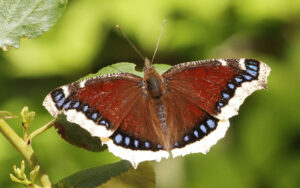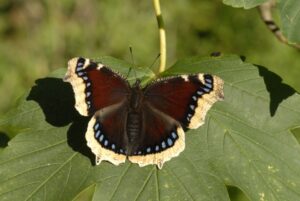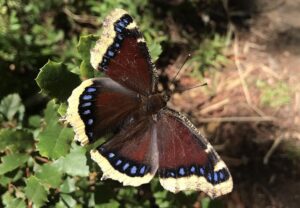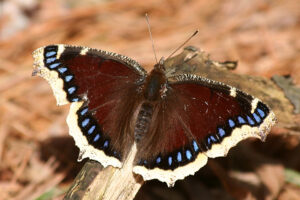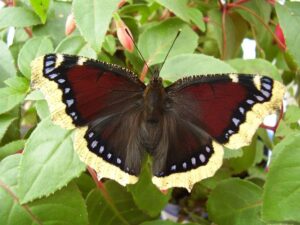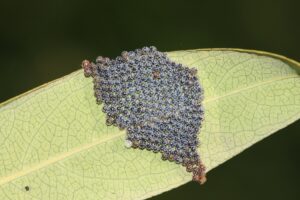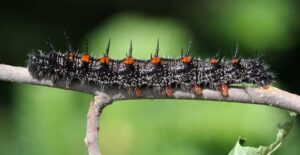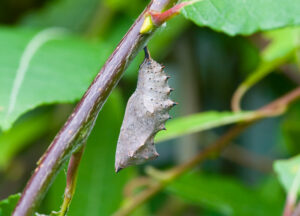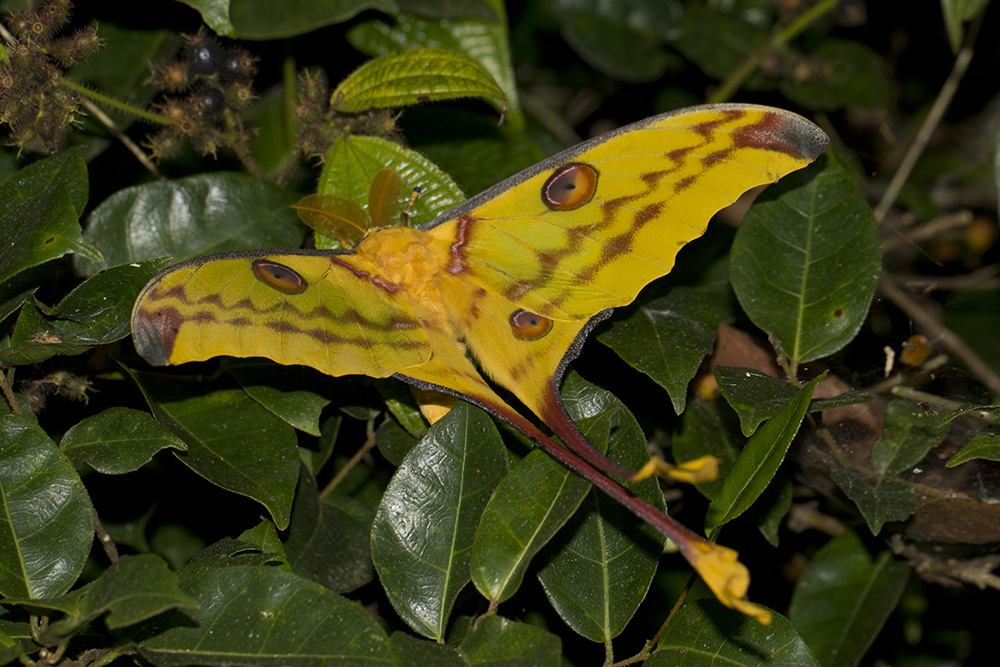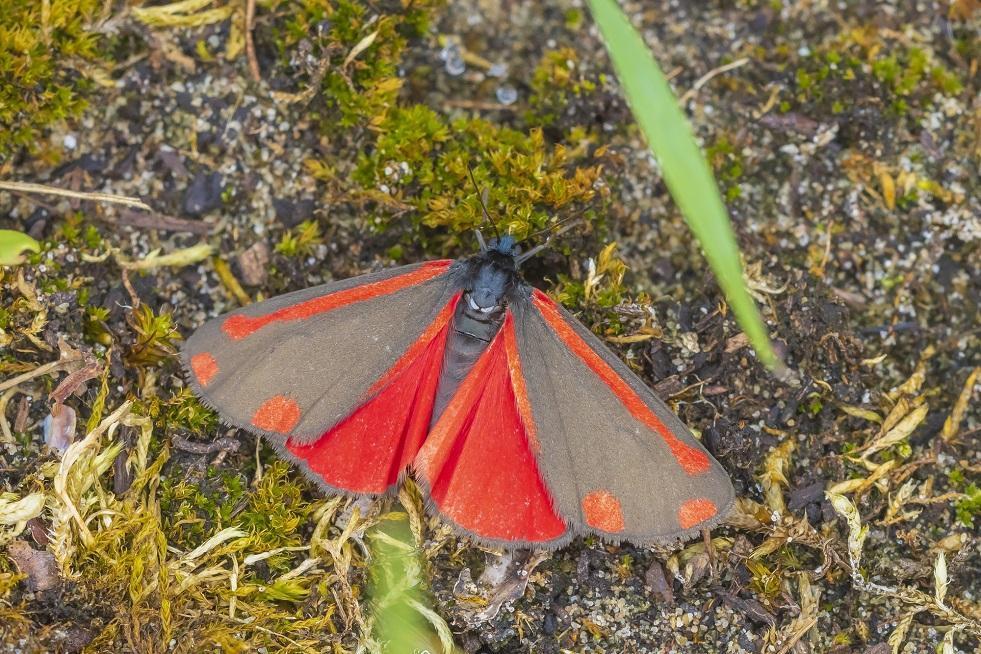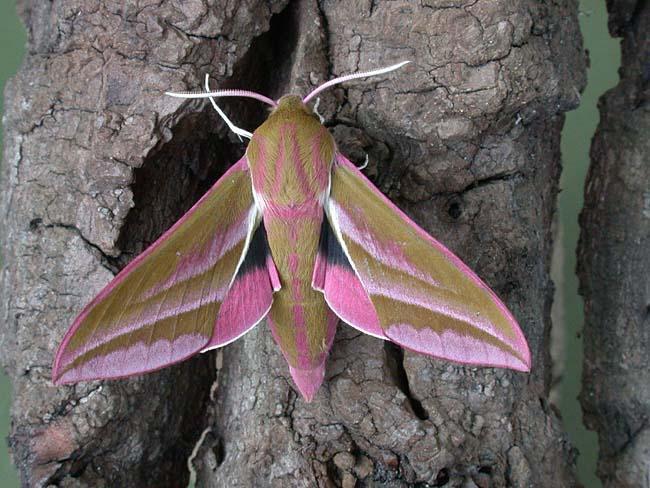Mourning Cloak Butterfly (Nymphalis antiopa)
Updated on
17/11/2022The mourning cloak butterfly is big with a striking pattern and unique appearance. Native to North America and Eurasia, the butterfly is called by several names. It is referred to as a mourning cloak in North America since the pattern is associated with the traditional outfit worn during mourning.
Its British name, Camberwell beauty, given by English etymologist Moses Harris originates from its place of discovery. Other names include the white petticoat grand surprise and the spiny elm caterpillar. The mourning cloak has been Montana’s state insect since 2001. Though they have a stable population, their numbers are legally protected in Austria and Switzerland. In Finland, their population density is rising, while their status is considered safe in the Czech Republic.
Scientific Classification
- Class:Insecta
- Order:Lepidoptera
- Family:Nymphalidae
- Genus:Nymphalis
- Species:N. antiopa
Conservation Status
Description
The dorsal part of their wings appears dark, maroon, or sometimes brown. The edges of the wings have a pale-yellow ragged pattern. A black line marked with iridescent blue spots demarcates the maroon and yellow. The ventral side of the wings has grayish ridges, with the edges being pale yellow.
Distribution: Throughout northern Eurasia, and North America; northern regions of South America; also occasionally seen in parts of Asia like Japan
Habitat: In open woodlands, parks, gardens, ponds, groves, and lakes
Do they bite: The adults don’t bite, the caterpillars have spines on their body, but they don’t sting either
Lifespan: 10-11 months
Predator: Eggs – Assassin bugs, true bugs, mites, beetles, ants;
Adults – Dragonflies, birds, tachinid flies, some mammals, amphibians, and reptiles
Subspecies
They have three subspecies inhabiting the whole of North America.
- N. a. antiopa
- N. a. hyperborean
- N. a. lintnerii
- N. a. asopos
Behavior and Characteristics
Feeding
The caterpillar feeds on the leaves of several plants right after hatching from the egg. The host plants include hackberry, willow, American elm, wild rose, hawthorn, poplar, and gray alder. The larvae are gregarious and live in the silken nest built on host plants until pupation begins. The adult butterflies feed on saps of trees like oak and rotting fruits. They may occasionally suck nectars of flowers.
Migration
Though non-migratory, some specimens living in North America are said to migrate southward from September to October. Being strong, powerful fliers, they can travel to places far from their usual range.
Hibernation
They are one of the few butterflies to adopt a unique hibernation strategy of cryo-preservation, where they freeze inside their dwellings throughout the winter. The mourning cloak arises from its dormancy as winter ends and spring begins.
Defense strategies
They camouflage by folding their wings when on trees so that their dark wings blend well with the background of the tree. They might even fly together in a large group with other butterflies to scare their attackers. The mourning cloak butterflies can also play dead, remaining still by folding their wings tightly and tucking their legs. They can stay in that position for a few minutes before returning to normalcy. Producing loud clicks is another way these butterflies keep their foes away. The larva and pupa also stay in groups and drop collectively to the ground or twitch in synchrony when attacked by predators.
Mating
The mating season starts in spring after the butterflies come out of their winter hibernation. They are polygynous, with a male mating several females in a single breeding season. Most males would seek a prospective breeding site that would be thronged by a large number of females or might offer them an increased amount of useful resources. The preferred sites include sunny perches close to ravines, parks, wood margins, gardens, ponds, and lakes. The better the territories, the more the males’ chances of a successful mating endeavor. They mostly indulge in lekking that involves male-male competition and courtship displays to attract females.
Life Cycle
1. Egg Stage
The color of the eggs varies from amber-yellow to pale-olive green when laid first. They eventually change to pink and then turn black before hatching. The eggs of the subspecies N. a. hyperborean are more amber yellow and less olive green.
2. Larva Stage
The caterpillars appear striking because of their black bodies. They even have eight dots, reddish-orange, running down their back. Other features include black heads, red prolegs, and white spiny hairs covering their back. When fully grown, they can measure about 2 inches.
3. Pupa Stage
The pupae are about 0.8 inches but can attain a maximum length of over an inch. Their color varies from tan to brownish-gray. They have sharp spikes with red tips arranged in two rows at the conjunction of their ventral and lateral sides. The chrysalis’ body also has horns, a beak, and tubercles.
4. Adult Stage
The adults live for about a year, and both sexes have minimum or no differences.
Damage Caused by Them
The larvae feed on leaves of ornamental trees like poplar and willow, resulting in complete defoliation. Young trees are more susceptible to damage than older trees.
Interesting Facts
- They find suitable habitats in areas that have experienced firebreaks. The probable reason could be that these places have more clearing and open spaces for these butterflies to inhabit.
- These butterflies have found a place in several literary works, like Louis Golding’s novel Camberwell Beauty, Fred M. White’s A plague of Butterflies, and August Derleth’s short story, The Adventure of Camberwell Beauty.
Source
insectic.com, pyrgus.de, townnews.com, squarespace-cdn.com, i.pinimg.com, lianginsects.com, nhpbs.org,




